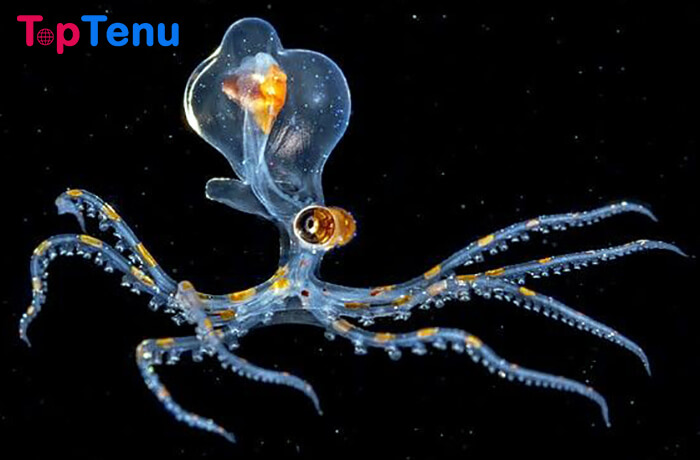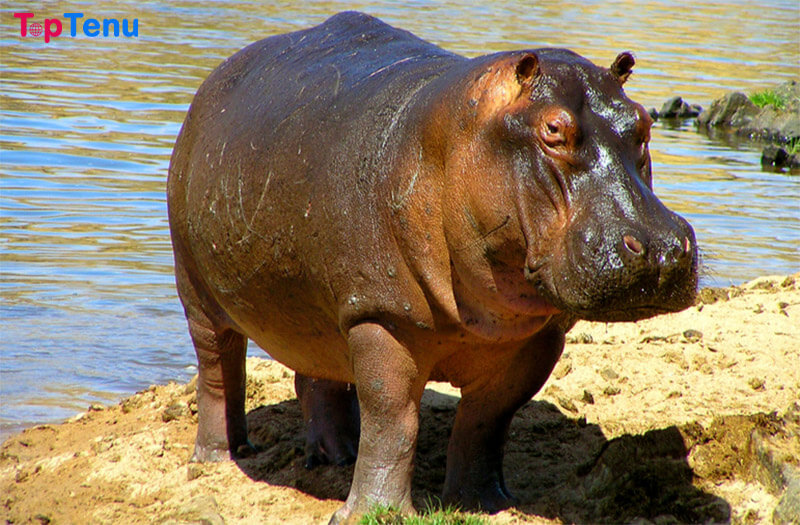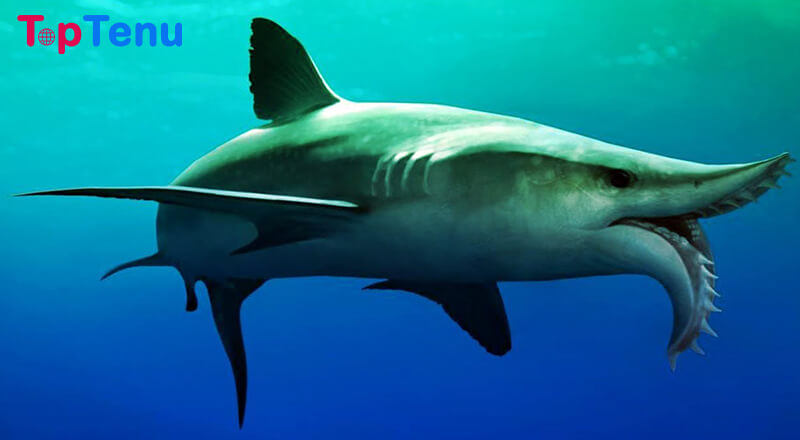Top 7 Scariest Looking Aquatic Creatures
7. Japanese Spider Crab
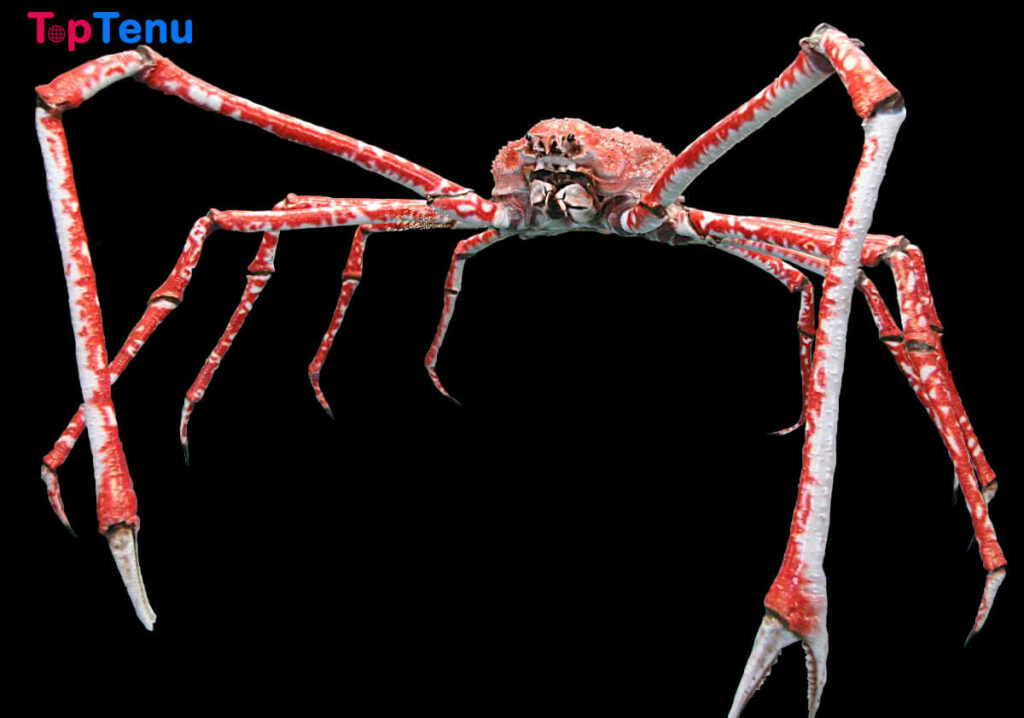
Japanese spider crabs may be slow-moving, but they’re 8 legs can span up to 10 feet wide and are equipped with 2 claws growing up to 12 feet. Like most crabs, they come with a hardened armour shell exoskeleton.
As they grow in size, they will molt from the exoskeleton, leaving it behind. After a few days their now soft exposed body hardens again, and they are safe from potential predators once more. They have been known to survive missing 3 limbs, but like spiders, they can be regenerated throughout their expansive 100-year average life cycle.
If you’ve ever wondered what a century-old, armoured sea spider looks like, now you know. Or do you? As part of the decorator crab family, these clever crustaceans use materials from their environment to disguise themselves, allowing them to stalk the pacific seabeds off the coast of Japan down to Taiwan. Thriving in chilly water temperatures of around 50 Fahrenheit, they prefer to stay at depths of 160 to 1600 feet.
These omnivores eat the decaying matter of plants or animals and scavenge the seafloor for dead carcasses. Despite not being hunters, with 12 foot claws, they are certainly powerful enough to seriously maim an adult.
6. Monkfish
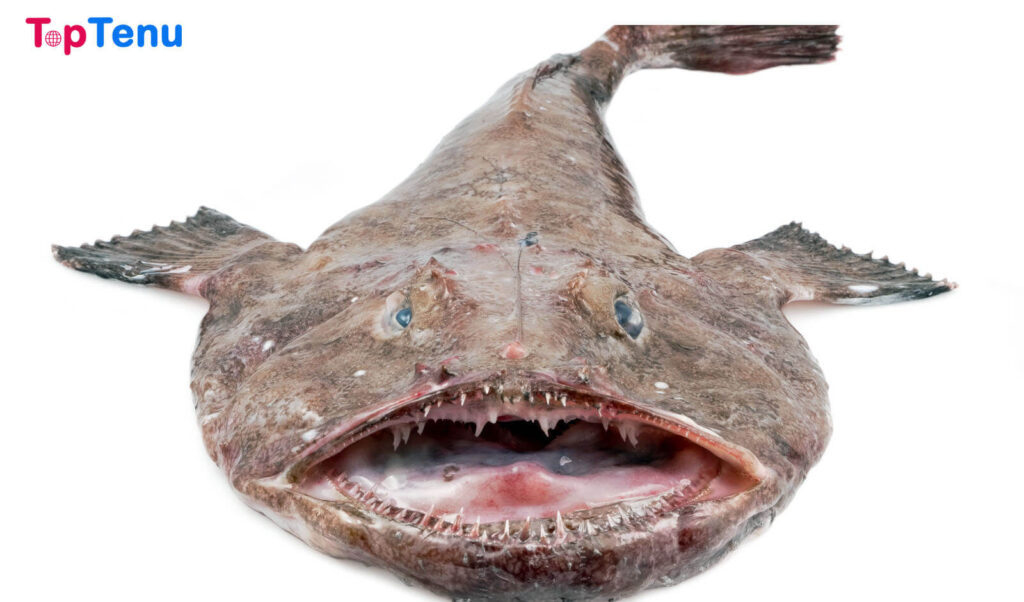
Otherwise known as the poor man’s lobster – these saltwater carnivores can be found all over the globe, at depths ranging from 1 to almost 10,000 feet. Not the only impressive numbers, some species can grow up to 80 inches, or over 6-and-a-half feet long, weighing in at a whopping 130 lbs.
There are 7 different species of Monkfish, the: anglerfish, American angler, yellow goosefish, blackfin goosefish, shortspine African angler, black bellied angler, and the devil anglerfish. Each one uglier than the last. The most infamous of these species is called the black seadevil.
These black/brown gelatinous blobs are known best for the bioluminescent ‘fishing rod’ attached above their sprawling jaws. Flashing light is used as bait to lure in other fish to their impending doom.
Fang-like teeth facing slightly inward are designed to keep fish or squid from escaping rather than being chewed, as the black seadevil will use its all-encompassing mouth to swallow victims whole. Critically, they have a highly distensible gut, meaning they are able to eat prey bigger than themselves.
Unfortunately, if you’re a male seadevil, none of this applies. They are much smaller than females and are not equipped to “fish” – expending all their energy since hatching, chasing after females, in an attempt to fertilize her eggs.
The depths they’re found at also means the chances of you running, or swimming into one are zero. Let alone being eaten by one. The rarest of footage that captures them in their natural surroundings shows endless darkness, making it difficult to get a scale of these monsters.
Despite their ferocious looks, they’re relatively small in real-world terms. The larger females are only 7 inches and the males hang around about at a measly inch long…
Related: 9 Horrifying Facts about the Megalodon
5. Rocksucker Fish
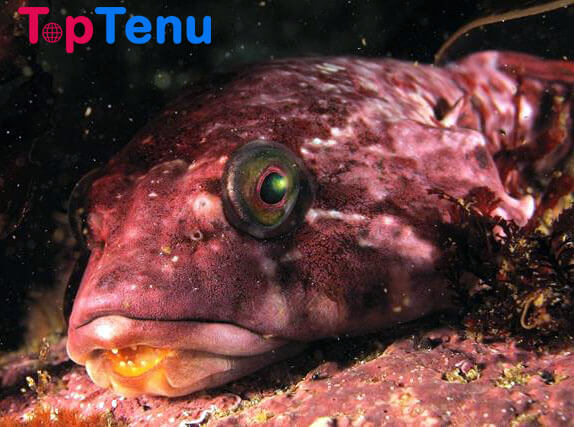
Or as it’s also known, the giant clingfish. This is the largest species of the clingfish family, growing up to 12 inches in length. Found living in shallow reefs and rock pools off the southern tip of South Africa, these oddly shaped creatures vary in color but most often appear in a blotchy green or red hue.
They are flat-bottomed, almost like a stingray, but are teardrop-shaped from above. Hardly a looker under water, these bug-eyed fish become even more disturbing if dried out.
The Rocksucker Fish has disproportionally large teeth that they use to feed on mostly limpets. By nature, some are washed ashore and after eventually dried under the sun, their bright red scales, soulless black eyes, and large fangs have led some beachcombers to report finding a “sea monster”.
A sinister smile is revealed by the skin tightening when baked under the African sun. Despite being a healthy 12 “”sea monster” they use their fangs to aggressively remove limpets from the rock they’re attached to.
Usually firmly attached, and awkward to dislodge, the giant clingfish has mastered its technique. Blink and you’ll miss it. Darting forward and swimming up, before quickly diving down and using the giant fangs to lever its dinner from off the table.
4. Red Handfish
If it weren’t for the fact that this next fish appears to have a pair of human-like hands, I’m certain it would have been named after its very upset face. Fear not though, the worst these fish can do is shoot a dirty look.
Red Handfish are Anglerfish, possessing an illicium. Unlike some, they do not use this dorsal fin hanging above their mouth to bait prey. Still, little is actually known about their biology. Two 50-meter-long reefs in southern Tasmania are home to all known Red Handfish, which are thought to be less than 200 adults.
Averaging just over 3 inches in length when fully grown, they thrive in the chilly 55 degrees Fahrenheit waters. These critically endangered patchy red creatures are named for their highly unique pectoral fins, which they use to ‘walk’ slowly along the seabed.
Although they can perform a fun trick and change the intensity of their skin color, they lack the ability to control their buoyancy like other fish. In November 2020, in an attempt to rejuvenate their population, 42 captive-raised Red Handfish were released into the wild, likely doubling the population near Tasmania’s capital, Hobart. High fives all around.
3. Northern Stargazer Fish
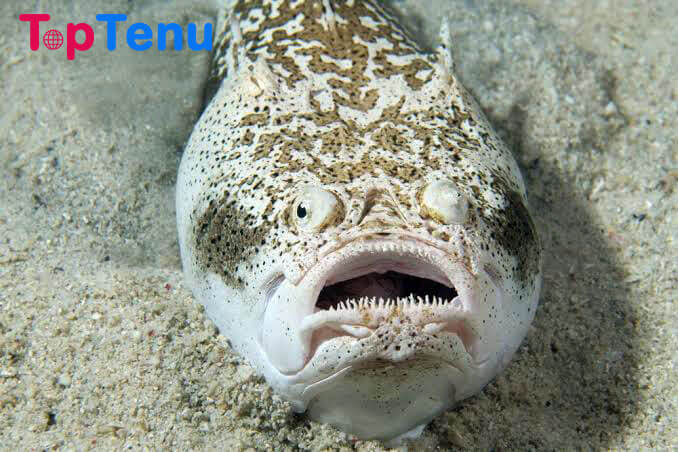
Surely one of the ugliest creatures known to man, let alone fish, is the Northern Stargazer fish. As bottom dwellers, they can be found living on the shores of North Carolina and New York State, although they are not easily spotted.
They inhabit the bottom of deep open waters and are adept at camouflage. Less so because they don’t like the fish in the mirror, and more so, so that they can surprise their prey. As ambush predators, they use their stone-like appearance, burying themselves under the sand or dirt, with progressively larger spots down their back adding to the illusion.
Spotty-bodied, this family of fish gained their common name, Stargazer, as their eyes and mouths would face upwards towards the skies. Large eyes and a mouth are all that remain seen above the seabed.
If they require a closer look, they can physically pop their eyes out of their head. The process is called proptosis, in which fluids fill the cavity behind the eyes and pushes them out of the skull! The Northern Stargazer is shockingly quick when prey foolishly swims above it.
They will eat almost anything that will fit into their fringed, ghoulish mouths. Their technique is to Create a powerful vacuum to suck in its prey, before snapping its jaws shut in the blink of an eye. Not only good on the attack, but northern stargazers can play defence too.
If submerging themselves to hide from prey doesn’t work, they are venomous, but also can dish out a 50-volt electrical shock. While both would cause lingering pain, swelling, and burning, neither shock nor sting would kill an adult. But if looks could kill, eh?
Related: 10 Craziest Theories about Dinosaur Extinction
2.Giant Salamander
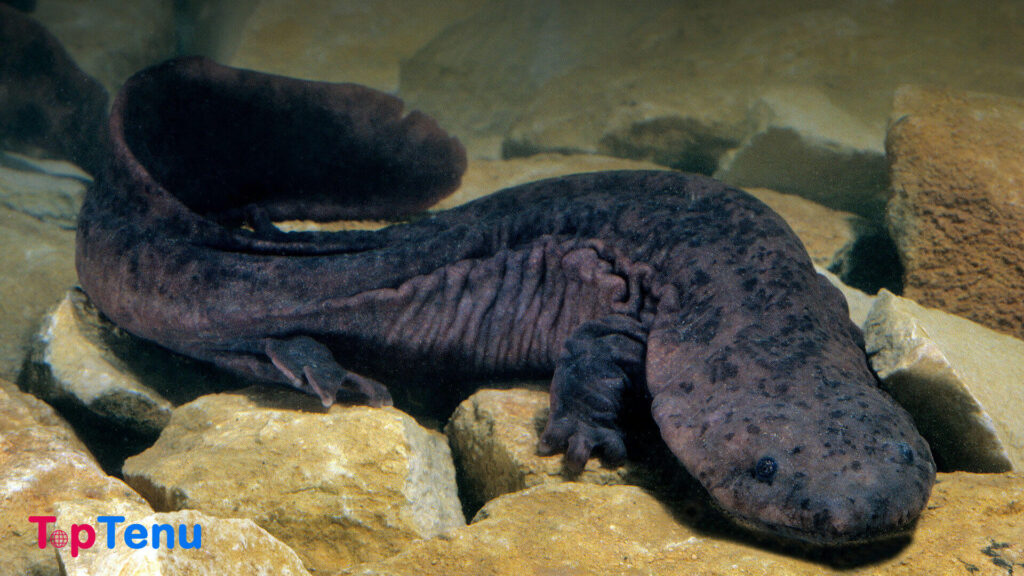
Japan may have the largest arthropod, but China has the largest living amphibian, the South China giant salamander. Also found in Japan and America, the giant salamander family can grow up to 5.9 feet in length, weigh up to 100 lbs., and live for more than 50 years.
Nocturnal by nature, they burrow into riverbeds to rest during the day. Having bad eyesight and no eyelids isn’t so bad in the dark, especially when you come with sensory nodes on your head that allow the giant salamander to detect minute changes in the water pressure nearby.
Fish, insects, and crustaceans are on tonight’s blind tasting menu. Commonly mistaken for lizards, these amphibians have neither scales nor claws, and have flattened heads and stockier bodies. The way they move along the riverbed is reminiscent of crocodiles, but their bodies are black, and in part, appear to be pebble-dashed.
They are creatures that have hardly changed their prehistoric appearance over the last 20 million years.
1. Helicoprion
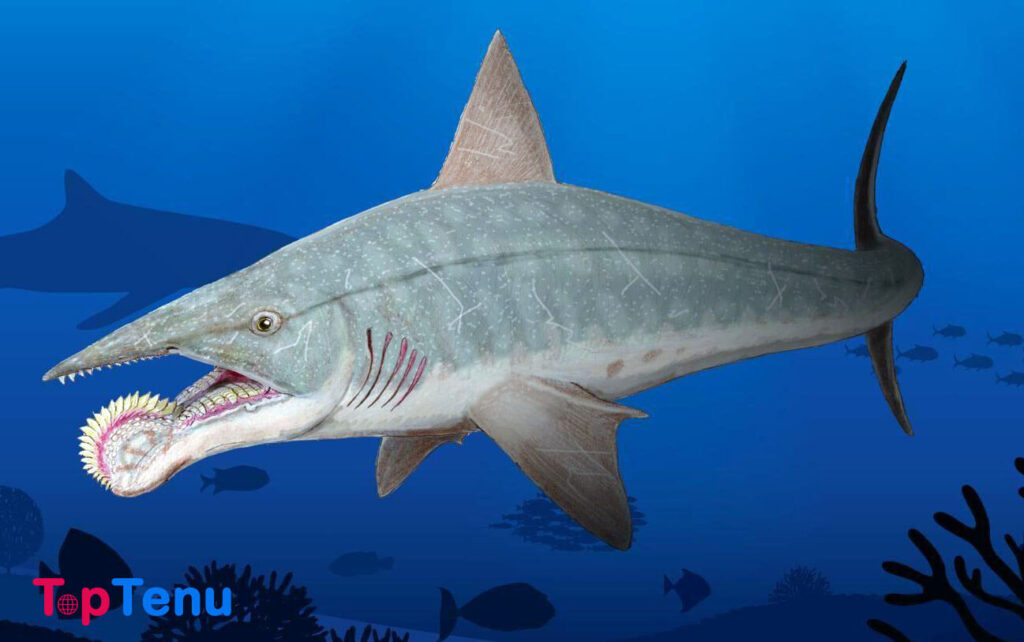
Perhaps it’s the fear of the unknown, but despite having never been seen by a human, alive or dead, this must be the scariest looking creature to have ever swam in earth’s waters.
This prehistoric beast was lurking in oceans close to 300 million years ago. It was named Helicoprion by Russian geologist, Alexander Petrovich Karpinsky, in 1899, which means spiral saw. This 20-foot-long whorl-toothed shark was discovered and named, after which things got a bit more, ‘imaginative’.
Due to the fact it was found separated from a body, no one, not even its discoverer, could say how it fit to the body. For the next 50 years, geologists, ichthyologists, palaeontologists, and every other kind of ‘ist’ argued their point. Some speculated it was curled up external to its mouth, akin to a Sawshark.
Theories about how it might fit inside the jaw were dashed as quickly as they were posited. Others surmised it was on the shark’s back for defensive posturing or perhaps part of its tail, some declared.
Then in 1950, a helicoprion whorl specimen was discovered with one crucial piece of evidence attached: cranial cartilage. Confirming the whorl must have been, at least in part, in the beast’s mouth. In 2013 the most complete answer to date was published by a team from Idaho university.
They believed the whorl of teeth grew inside the lower jaw. Continual growth pushes the curved tooth root complex towards the front of the jaw. This jaw is thought to have been up to 20 inches long, and held as many as 150 teeth!
They used this to slice up soft-bodied prey, which would be funnelled into the oral canal. This discovery being a whole different kind of ‘Jaws’. Would you rather be pinched by the Japanese spider crab or step on an upturned thumbtack?

